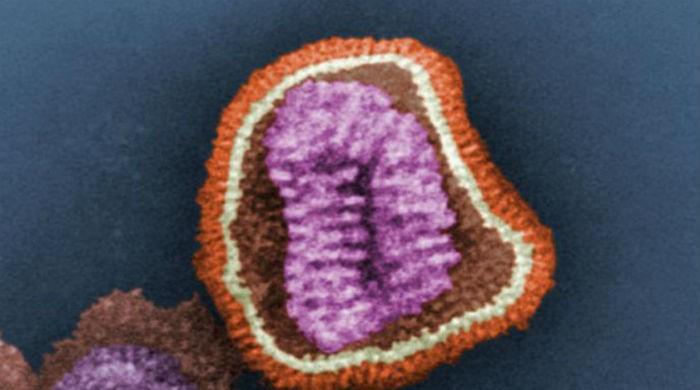Frog excretes mucus that fights flu: study
A frog in south India excretes mucus from its skin that could one day help people fight off certain types of flu viruses
April 18, 2017

MIAMI: A frog in south India excretes mucus from its skin that could one day help people fight off certain types of flu viruses, researchers said on Tuesday.
The colorful, tennis ball-sized frog is known as Hydrophylax bahuvistara, said the report in the journal Immunity.
"Different frogs make different peptides, depending on where their habitat is. You and I make host defense peptides ourselves," said flu specialist and study co-author Joshy Jacob of Emory University.
"It´s a natural innate immune mediator that all living organisms maintain. We just happened to find one that the frog makes that just happens to be effective against the H1 influenza type."
When researchers delivered small electric shocks, they collected the excretion that contained a peptide, or chain of amino acids, that appears to fight off the H1 strain of flu virus.
Researchers named the antiviral peptide urumin, after a whip-like sword used in southern India centuries ago, said the report.
Urumin is not toxic to mammals, but "appears to only disrupt the integrity of flu virus, as seen through electron microscopy," it said.
When researchers squeezed some urumin into the noses of lab mice, the peptide protected them against what would have otherwise been a lethal dose of H1 flu virus, the kind responsible for the 2009 swine flu pandemic.
More research is needed to determine if urumin could become a preventive treatment against the flu in humans, and to see if other frog-derived peptides could protect against viruses like dengue and Zika.









